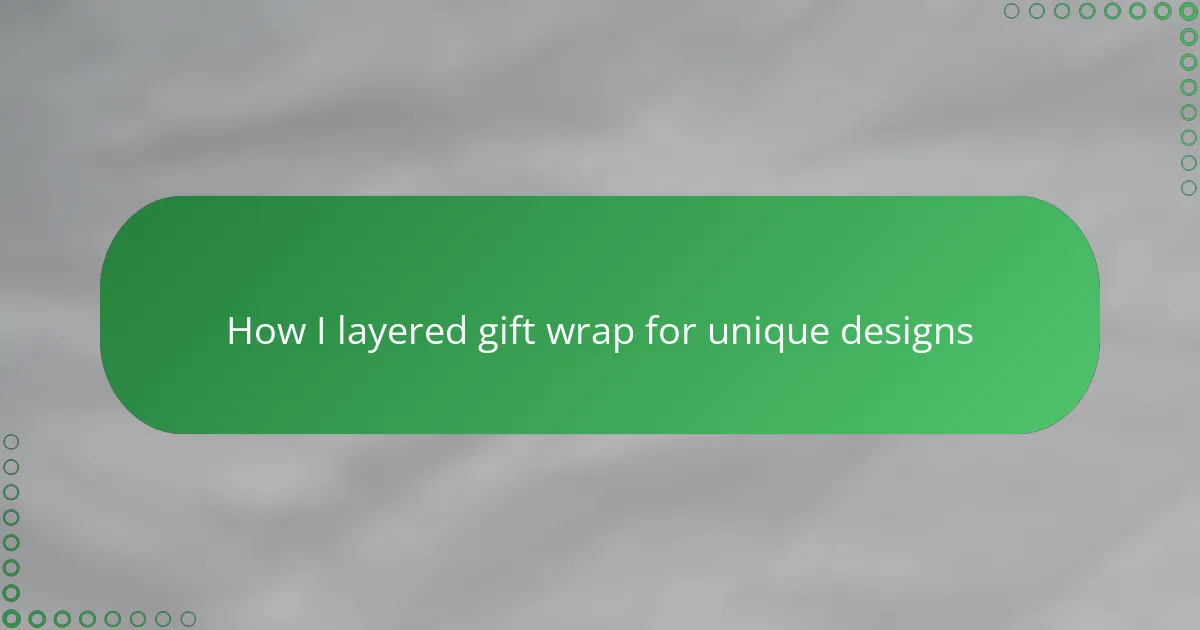Key takeaways
- Handmade paper crafts foster creativity and a personal touch, making the crafting process meaningful and meditative.
- Mastering gift wrapping basics, such as measuring and folding, is essential for creating visually appealing and thoughtful presentations.
- Layering different textures and materials in gift wrap can enhance design depth and transform ordinary packages into unique works of art.
- Embracing imperfections and experimenting with creative elements can lead to memorable and inviting gift presentations.

Introduction to Handmade Paper Crafts
There’s something truly special about handmade paper crafts that machine-made items just can’t replicate. I remember the first time I folded a sheet of handmade paper—it felt textured, alive even, as if it held stories within its fibers. Have you ever held something that instantly felt personal, almost like a small work of art created just for you?
Handmade paper crafts invite us to slow down, to appreciate the beauty in imperfections and the uniqueness of every piece. When I create with handmade paper, I’m not just crafting an object—I’m weaving a little bit of my heart into each fold and crease. Doesn’t that make the process feel more meaningful than simply buying something off the shelf?
What fascinates me the most is how handmade paper supports creativity in ways that feel organic and inspiring. The tactile experience sparks new ideas and encourages experimenting with layers, colors, and textures. Have you ever noticed how working with your hands like this can center your thoughts and make crafting feel like a form of meditation?
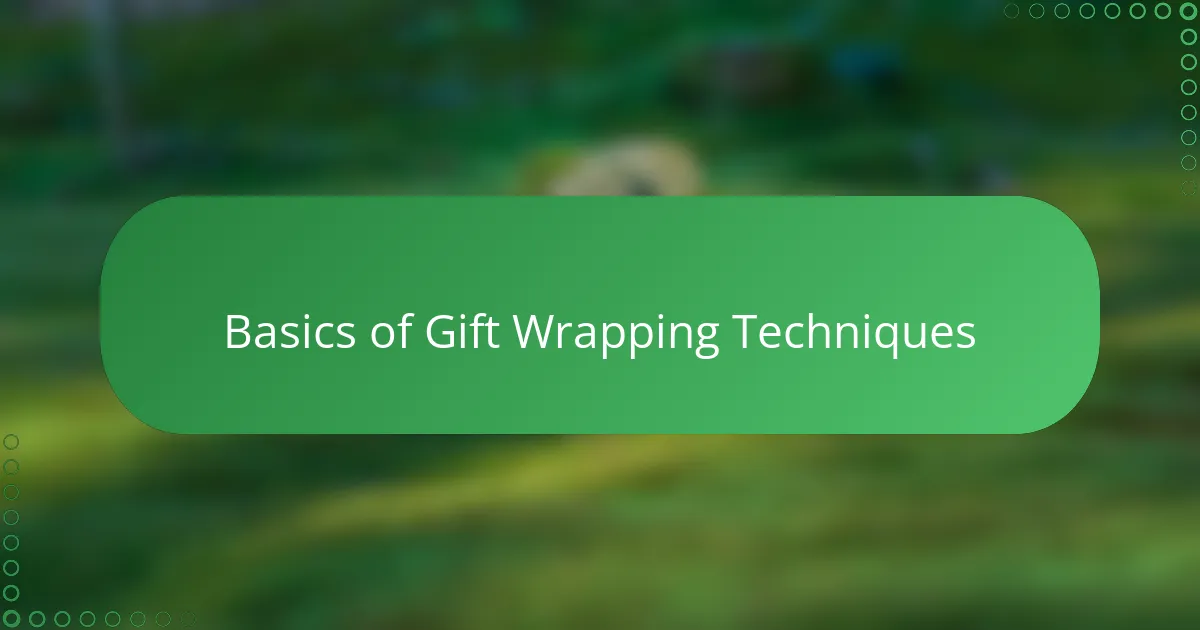
Basics of Gift Wrapping Techniques
When I first started gift wrapping, I quickly realized that mastering the basics is key to creating something truly special. Simple skills like measuring your paper accurately, folding crisp edges, and securing tape neatly set the foundation for any design. Have you ever struggled with awkward wrinkles or misaligned corners? Getting these right feels like a small victory that boosts your confidence.
One technique I find invaluable is choosing the right paper size and folding method to suit the gift’s shape. I remember wrapping a particularly odd-shaped box and how careful folds and strategic layering helped me tame its form. It reminded me that wrapping is as much about problem-solving as it is about decoration.
Most of all, I’ve learned that patience and attention to detail transform a wrapped gift from ordinary to memorable. Taking the time to smooth edges or add neat folds doesn’t just make your gift look good—it shows the care behind it. Isn’t that what handmade wrapping is really all about?
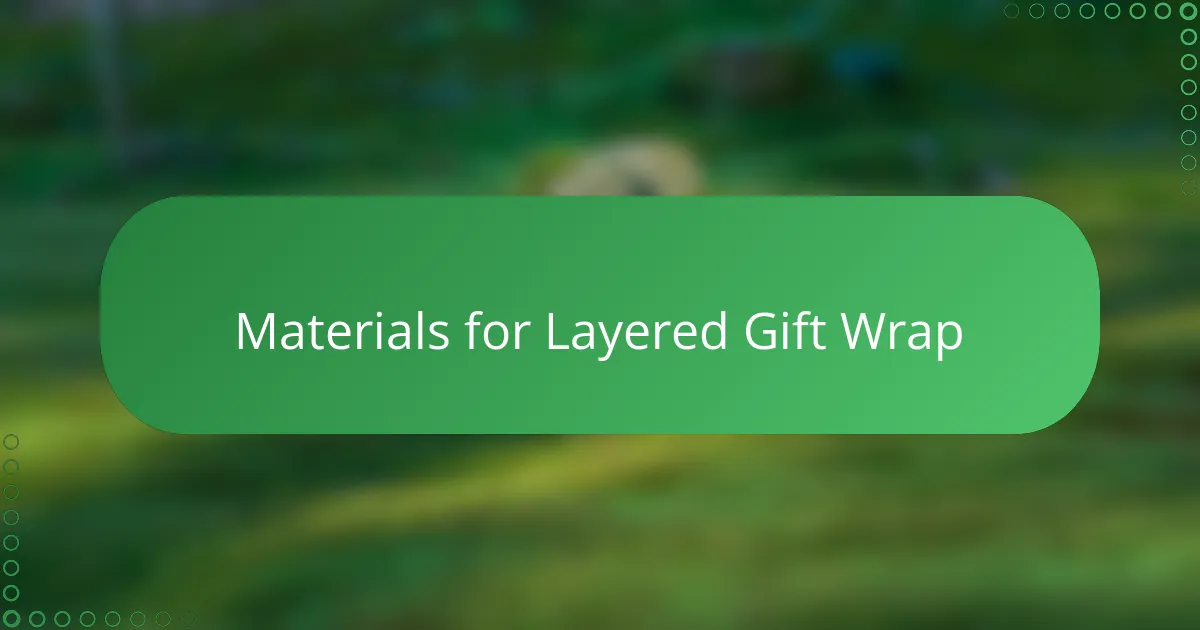
Materials for Layered Gift Wrap
When I started layering gift wrap, choosing the right materials was a game-changer. I often reach for handmade paper because its texture and subtle variations add depth that flat, mass-produced sheets just can’t match. Have you noticed how the feel of the paper alone can elevate the entire design?
Besides paper, I love mixing in natural elements like twine, dried flowers, or thin fabric scraps. These materials bring an unexpected touch of warmth and personality. Sometimes, I find that combining smooth ribbons with rougher textures creates a beautiful contrast that draws the eye.
Of course, adhesives matter too—I prefer double-sided tape or glue dots because they keep layers neat without the mess of liquid glue. When my layers stay crisp and secure, the finished look always feels more polished. Have you tried experimenting with different tapes to see what holds best without damaging delicate papers?
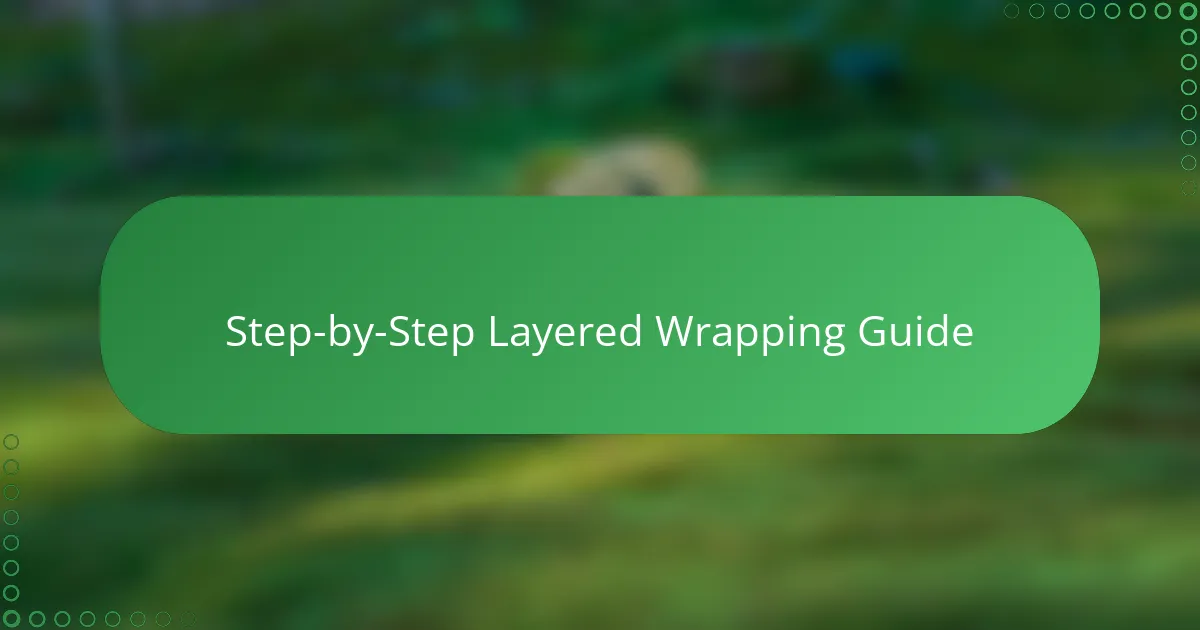
Step-by-Step Layered Wrapping Guide
Step one always involves selecting your base layer carefully. I like to pick a sturdy handmade paper that sets the tone for the whole design—something textured but not too thick, so it folds smoothly. Have you ever noticed how the foundation can either make or break your wrapping project? Getting this right feels like setting the stage for a beautiful story.
Next, the layering begins by adding contrasting sheets in smaller sizes or different shades. I enjoy cutting uneven edges or soft curves to create subtle movement between the layers. It’s like painting with paper rather than paint—adjusting each piece until the composition feels just right. Don’t you find it satisfying when those little variations turn an ordinary gift into something truly unique?
Finally, securing each layer without disturbing the shape requires some patience. I often use tiny dots of glue or double-sided tape at carefully chosen spots, ensuring the papers don’t shift but keep a bit of natural flow. This step can feel a bit fiddly but trust me, the delicate balance between firmness and softness is what makes layered wrapping so captivating. Have you tried this approach before and noticed how it transforms the gift’s presence?

Creative Design Ideas for Gift Wrap
One of my favorite creative twists is layering papers with varying textures and colors to create depth—think of pairing a rough, fibrous sheet with a smooth, translucent one. It’s like giving your gift a little personality, each layer whispering its own story. Have you ever felt how these subtle contrasts make a simple package feel like a carefully composed piece of art?
Sometimes, I experiment with adding unexpected elements, like weaving in thin strips of torn handmade paper or folding small origami shapes as decorative accents. These playful details invite curiosity and show that you truly put thought into every inch of your wrapping. Isn’t it rewarding when the recipient notices those little touches that elevate your design beyond the ordinary?
I also find that embracing asymmetry can lead to unique gift wrap designs. Instead of perfectly aligned edges, I let the layers overlap unevenly or curl gently at the corners, creating a natural flow. It makes each gift feel organic and lively—almost like it’s inviting someone to explore what’s inside. Have you tried letting go of strict precision to enjoy the charm of imperfect, layered beauty?
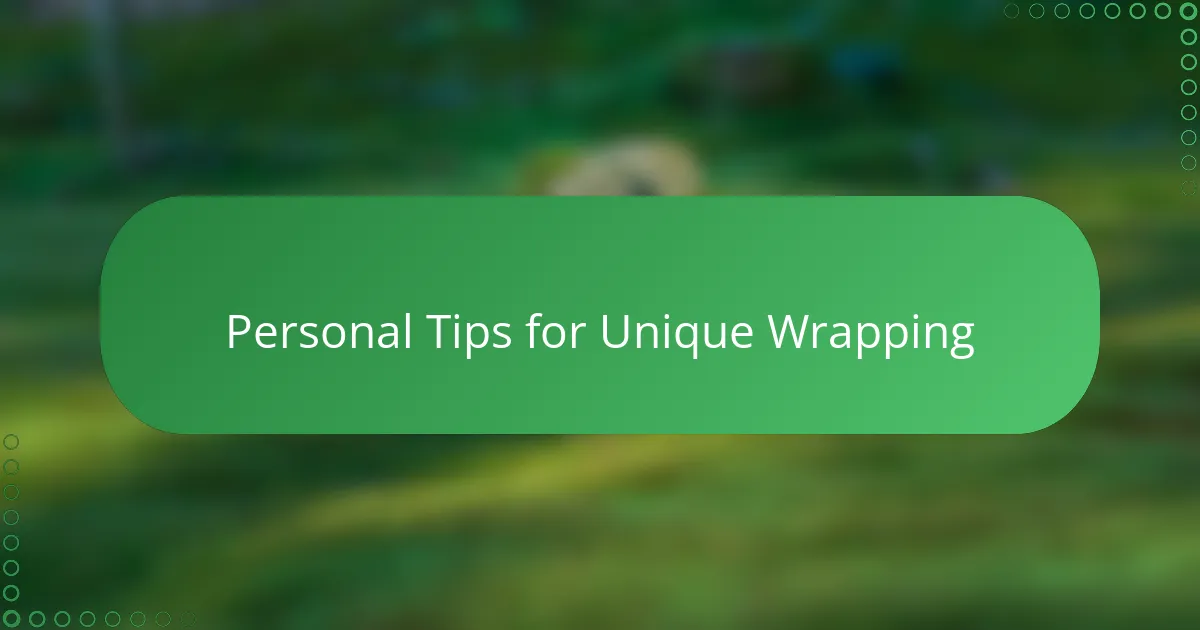
Personal Tips for Unique Wrapping
When I first started experimenting with unique wrapping, I found that trusting my instincts made the biggest difference. Sometimes I’d hesitate, worried about making a mistake, but letting go and playing with unexpected layers often led to the most charming results. Have you noticed how a little creative risk can turn a simple package into something truly memorable?
One trick that always helps me is combining textures that surprise me—like soft handmade paper paired with crisp, recycled cardboard scraps. It creates depth and invites touch, making the gift almost feel alive before it’s even opened. I wonder, have you ever felt how layering different materials can evoke curiosity and warmth all at once?
Lastly, I carve out quiet moments just to wrap gifts, almost like a pause in a busy day. This space lets me focus on every fold and layer, turning the act of wrapping into a kind of heartfelt meditation. Doesn’t it feel rewarding when your hands slow down and the final design reveals more than just a wrapped present, but a gift full of intention?
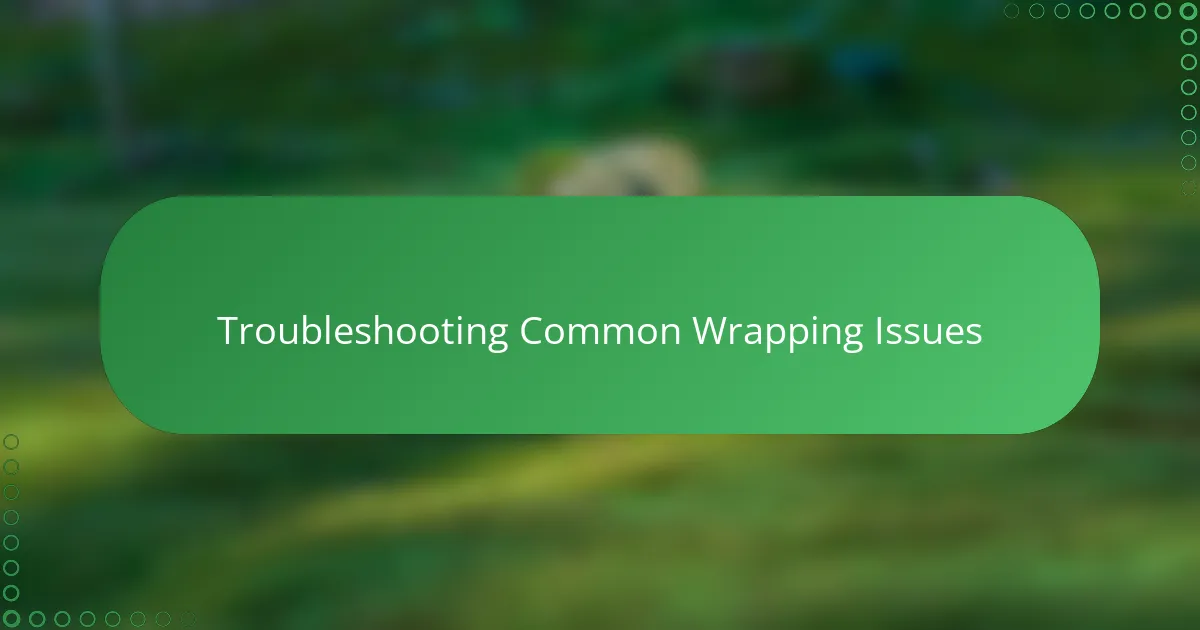
Troubleshooting Common Wrapping Issues
One challenge I often face is dealing with tears or wrinkles in delicate handmade paper. I’ve learned that using a light hand and gentle folding can help prevent these issues, but what do you do when they happen anyway? My go-to fix is to add an extra layer strategically placed to mask imperfections—it not only hides flaws but adds interesting texture, turning a potential problem into a design asset.
Aligning multiple layers can also get tricky, especially when the papers vary in thickness or flexibility. I used to get frustrated when edges didn’t quite match or corners looked messy. Over time, I realized that embracing slight irregularities as part of the handmade charm takes the pressure off. Have you ever noticed how a bit of asymmetry actually makes layered wrapping feel more organic and inviting?
And then there’s tape—finding the right balance between secure adhesion and preserving the paper’s beauty can be a subtle art. I remember struggling with visible tape ruining a delicate design until I switched to double-sided tape and small glue dots. If you’re wrestling with sticky messes or unwanted shine, experimenting with these less intrusive options might just save your wrapping day. Have you found particular adhesives that work wonders without compromising the look?
